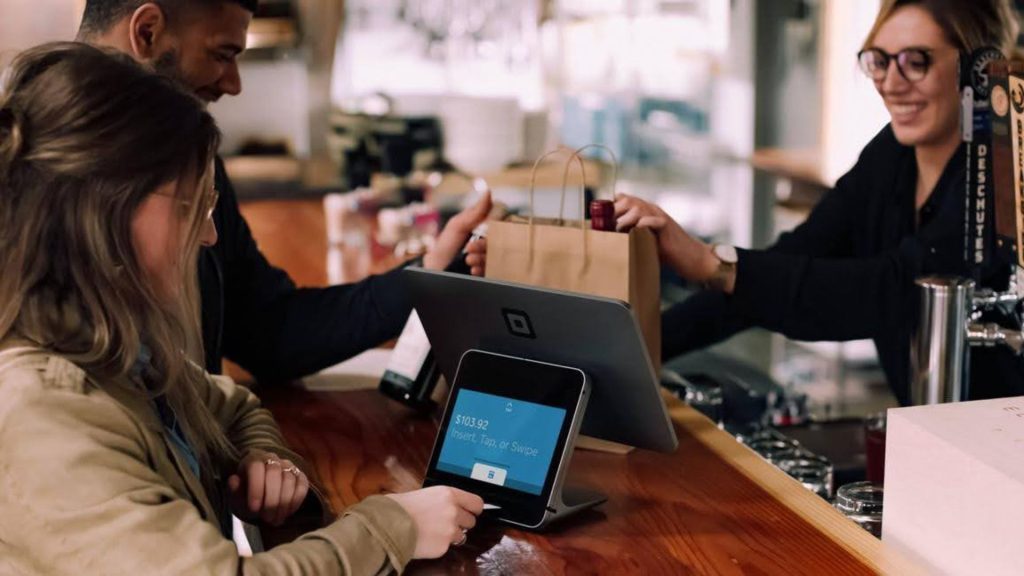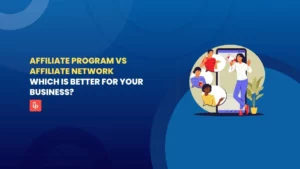Forging credible and mutually beneficial affiliate partnerships is one of the best strategies for ensuring affiliate sales & marketing success.
This strategy leverages people connections, allowing business owners to grow their brands and generate more revenues. You don’t need a huge budget to form long-lasting relationships. It only requires interpersonal skills and an excellent appreciation of what such partnerships can bring to businesses, affiliates, and customers.
So, who is an affiliate partner? Do you really need them? How can you optimize such relationships? If you’re curious to find the answers, read on.
What is an Affiliate Partner?
Everyone needs a partner to accomplish an objective. For businesses, that partner would be an affiliate marketer. They could be an agency, a blogger, a social media influencer, a podcaster, or a podcaster.
The term “partner” underscores a mutually beneficial dynamic between two parties. Your company teams with affiliates to promote your offerings to an intended audience. You will pay these marketer partners a percentage of each lead or sale they produce.
It’s a win-win. You generate revenues to grow your business. Affiliate partners earn extra for their promotional efforts.
Amazon Associates is a classic example. Businesses sell products on Amazon, leveraging the e-commerce platform’s warehouses across 58 countries and ensuring product availability worldwide.
Affiliates sign up with Amazon, pick the products to promote, get an affiliate link, and mount an affiliate sales & marketing campaign. Brands pay the affiliate a commission percentage for every verified sale they produce. Merchants earn. Affiliates earn. Win-win!
Three Pillars of Affiliate Marketing Partnerships
Successful affiliate partnerships require at least three parties: the merchant or seller, the affiliate, and the customer. You might be surprised that traditional marketing models don’t have an affiliate because marketers are part of the business organization. Let’s examine these parties or pillars deeper.
The Merchant

This is you. Merchants are product originators or sellers. They could manufacture the products or source them from another company. Merchants have the goods that consumers need. People are willing to pay for these products if they feel they’re worth the money.
Traditional merchants sell products directly to customers. In the affiliate marketing model, they partner with a third party to promote or sell their offerings.
You have two options for doing affiliate sales and marketing.
First, you could design a program from scratch. You will set up the infrastructure, create policies, and design programs for operating and supporting the affiliate partnership. You are also responsible for finding potential partners to promote your offerings.
It could be messy. The bright side is you will have a direct relationship with affiliate partners. You can also offer a more generous commission rate because you don’t have to pay a third-party affiliate platform.
Unfortunately, small businesses might find establishing an affiliate program challenging. If you’re in this predicament, partnering with an affiliate management network (i.e., ClickBank or ShareASale) is a sound decision.
Although these networks can collect fees, managing the affiliate strategy will be off your shoulders. The best part? You will have access to pre-screened and well-trained affiliate partners. They have an affiliate program manager and team to guide and support affiliates, so you never have to.
The Affiliate
Affiliates are anyone with a sizable online audience to promote products to. They can include bloggers, vloggers, podcasters, SEO specialists, email marketers, digital content creators, and other entities.
These individuals or businesses form the second leg of the affiliate partnership. They are bridges between merchants and customers, allowing the latter to learn more about the former’s offerings.
The potential affiliate partner must be persuasive without being too pushy or spammy. They create content to inform potential customers about a merchant’s offerings. Affiliate marketers mount different campaigns across channels to deliver a compelling message.
Affiliates strive to achieve trustworthiness and credibility. Otherwise, product recommendations will only fall on deaf ears. And that’s not good for the merchant or the affiliate.
Prospective affiliate partners sign up with the merchant’s proprietary program or a third-party affiliate platform. Vetting is essential. It will ensure that only qualified affiliates can promote the brand’s offerings.
The Customer

They are the recipients of an affiliate partner’s promotional activities and the merchant’s product offerings. The customer buys, allowing the merchant to generate revenue and the affiliate partner to earn a commission.
The affiliate partnership won’t be successful without the customer. After all, customers are the merchant’s and affiliate’s revenue source.
Customers dictate the partnership’s success. They want excellent value for their purchases. Consumers also expect unique experiences, exceptional customer service, and efficient delivery of offerings.
Moreover, customers expect brands (or merchants) to offer marketing engagement options, show social responsibility, and display customer loyalty. They also require affiliate partners to be knowledgeable about the promoted products and make personal recommendations based on facts.
Merchants and affiliate partners must manage these customer expectations to ensure a successful partnership.
Why Your Business Needs an Affiliate Partner Program
Businesses must strive to develop a healthy and robust relationship with customers. Financial gains will follow.
But why should you invest in affiliate partnerships? Can your company not mount a marketing campaign to attract more customers and grow the business?
An affiliate sales & marketing program is more cost-effective than traditional strategies. You pay affiliates only for verified customer action. For example, suppose your program only pays marketers for every qualified lead. In that case, you don’t have to pay a commission for fraudulent activities.
It gets better.
Partnering with high-performing affiliates lets you grow brand awareness. Affiliates have a broad audience following their blogs, videos, and other digital channels. And if you partner with social media influencers, you can leverage thousands of followers and turn them into a potential customer base.
You won’t spend a dime reaching these audiences because affiliate partners have it covered. That’s how you improve brand awareness.
That’s not all.
Affiliate partners will paint a rosy picture of your business. And since audiences consider their favorite affiliates as credible and trustworthy, building up your company image should be easy. The affiliate’s credibility extends to your business.
Here’s the thing.
Seven in ten customers will buy anything from a credible and trustworthy brand. They will purchase more products. Three in five customers will recommend your brand to their friends, while two in five will join a loyalty program if you have one. Moreover, 40% of customers will spread their positive brand experiences on social media.
You know what that means?
Your business will have more robust financial growth. You can expand into other markets and offer more employment opportunities to qualified individuals. Which business owner wouldn’t want that?
Strategies to Create an Ideal Affiliate Partnership

Appreciating the value of affiliate partnerships is one thing. But how do you make it successful? You might want to consider the following strategies.
Create a suitable affiliate program
Your first action would be to set your affiliate goals. How much revenue do you want to generate over time? What should be the average order value to generate sales and account for affiliate commissions?
Next, decide whether to build the program in-house or partner with an affiliate platform (i.e., ShareASale or Impact). The latter’s advantage is they have a complete affiliate management system ready to handle your program. They only require a fee.
You might need to consult with experts if you set up an in-house affiliate sales & marketing program. The strategy requires tracking technologies, payment solutions, reporting systems, and creative hosting. These resources might run in the thousands of dollars.
Regardless of the choice of program hosting (in-house vs. affiliate network), the next step is identifying the products to include. It shouldn’t be a problem if you only have a few offerings. Tens to hundreds of products can be a headache if you promote everything through the affiliate solution.
Next, decide on the commission structure, including rates and commissionable referral actions. Consider a lockout period to account for potential buyer-related problems. You must also plan payout terms and methods.
Formulate the program’s dos and don’ts or T&Cs. You can include posting rules, cookie guidelines, and other conditions you expect affiliate partners to adhere to.
Lastly, prepare affiliate resources, including creatives (i.e., promotional banners, coupons, discount codes, and brand images).
Recruit potential affiliates via multiple channels

Finding an affiliate partnership opportunity requires a multi-faceted approach. Affiliates have varying platforms or channels for catering to audiences. Most use blogs, while others have social media channels, podcasts, and other platforms.
Recruiting potential affiliate partners starts with a clear description of who the ideal candidate is.
For example, your business might want an affiliate with at least a 1-year-old blog and 200 minimum average daily visitors. You might also require an influencer with at least 1,000 fully engaged social media followers.
The ideal affiliate partner must have excellent knowledge of your niche. They must also appreciate the nuances of a targeted audience. The more familiar they are with your brand and offerings, the better. Creativity, interpersonal relationship skills, persuasiveness, and niche-related authoritativeness are noteworthy traits.
The clearer your affiliate description, the higher the chances of recruiting the right candidates.
Use proven SEO techniques to improve your affiliate recruitment page’s visibility on search engines. Send emails to your contacts. Post about your recruitment initiatives on social media channels. And if you have the budget, you could run an ad campaign.
Educate/Train your affiliates
You won’t worry about this strategy if you partner with an affiliate platform (i.e., Impact, ClickBank, or ShareASale). These networks train affiliates and have affiliate management teams supporting them.
Unfortunately, we cannot say the same thing with an in-house program. You must train affiliate partners yourself. Alternatively, you can assign someone in your company to manage and supervise the training program.
Teach affiliate partners about your business. What do you offer consumers? Do you have banners and promo materials affiliates must know? How about using creatives?
You will want affiliates to have an in-depth appreciation of your business. It will help them create more accurate and convincing product descriptions, reviews, and comparisons. They can recommend your brand to their audiences because they know you.
Join industry events to boost networking

Joining an industry event allows you to meet like-minded individuals and potential affiliate partners. Social media influencers might also be at these gatherings, enabling you to forge relationships with them.
Even if you don’t meet a potential affiliate partner, the event can be an excellent opportunity to share your business with participants. Some of them could become your email subscribers or social media followers.
Be honest when interacting with event participants. Although one of your goals is to find affiliate partners, don’t push the agenda every chance you get. Ideally, you will want to promote your business and why partnering with your program is beneficial.
Don’t be shy to ask for a digital business card or contact information. You’ll need this several days after the event. Even if your new contacts might not be interested in becoming affiliate partners, they remain excellent leads for future endeavors.
Cooperate with influencers
Social media influencers and bloggers are a rare breed. They have sizable followers ranging from thousands to millions. Although a mega influencer might be beyond your budget, a micro- and nano-influencer can help you grow brand awareness.
Cooperating with influencers allows you to leverage their credibility among followers. You could partner with them to share your brand with their audiences and followers. They don’t have to promote anything. However, their followers will be naturally curious why their “idol” mentioned your brand.
That’s enough to encourage followers to search your brand and learn more. And if you pay attention to your landing pages, you’ll have a higher chance of converting these followers into paying customers.
Influencers operate on a different model than affiliates. Although most influencers are okay with commissions, some might be more receptive to gifts. Others might require a fixed price, including an upfront payment.
Influencer partnerships are excellent for growing brand awareness and fostering brand loyalty.
Work with other compatible brands
An often overlooked strategy is collaborating with compatible brands. These are businesses within the same market segment but with a different target audience or vice-versa.
For example, suppose you have a travel company catering to retirees. You could partner with hotels and other accommodations, offering discounts to travelers above 60 years old. They can embed your program’s affiliate links in their digital content, including video recommendations and blogs. You can do the same for their affiliate strategy (if they have one).
Understand your niche and identify businesses you can collaborate with. The idea is to offer a win-win proposal. Explore the possibility of collaboration by asking the other business politely. You might want to describe the benefits of such a partnership to boost their willingness to work with you.
3 Examples of Affiliate Partnership Programs
Discussing affiliate partnership programs is one thing. Knowing how it works in real life is another. Let’s appreciate three examples of such programs,
Shopify

Over 1.75 million businesses are on Shopify, selling high-quality offerings to consumers wherever they are. The platform provides merchants with brand assets to build and grow their businesses from scratch.
It’s a dependable website builder for aspiring entrepreneurs and hopeful business owners. They can create an online store or sell their products on social media platforms or third-party e-commerce sites.
Shopify’s partnership with affiliates is as robust as its relationship with merchants. It offers marketers up to $500 commission per verified sale. Affiliate support is also noteworthy. But it doesn’t end there.
This platform also gives Partners a 20% recurring commission. Business owners could become a Shopify partner and leverage Shopify’s generous commission to boost revenue.
Shopify’s affiliate program underscores the nature of affiliate partnerships. Everything is mutually beneficial. Customers leverage Shopify’s e-commerce brand development expertise, while affiliates earn money.
- No. of Merchant Partners: 1.75 million+
- Commission: $25 to $500, merchant location- and product-dependent
Amazon

No discussion about affiliate marketing is complete without highlighting Amazon’s role in the industry’s phenomenal growth. Only two more years and Jeff Bezos’ creation would be 30 years old.
Amazon continues to wow the global e-commerce scene, with a $9 billion increase in market capitalization from 2023 to the first month of 2024 (from $1.57 trillion to $1.579 trillion).
With over 600 million offerings across 9.7 million sellers, Amazon is the undisputed e-commerce king. And you will be correct to assume this e-commerce giant has a massive network of hard-working affiliates.
As of 2021, Amazon has over 900 thousand marketers. Its influencer network is also commendable. While other businesses can only partner with a handful of social media influencers, Amazon has about 590.
Examples of these influencers under Amazon’s payroll include Rocky Barnes, Devyn Simone, and Tiffany Allison.
Although Amazon’s commission scheme isn’t as lucrative as others (ranging from 1% to 20%), the platform’s affiliate support remains one of the best.
You can become an Amazon partner merchant and leverage the company’s impressive affiliate network and support. Boosting revenues should be easy.
- No. of Merchant Partners: 9.7 million+
- Commission: 1% to 20%, product dependent
eBay

eBay’s partner merchants are dwindling. Sellers on the platform used to number 19 million in 2021. About 700,000 merchants packed their bags the following year.
Still, this e-commerce platform remains a giant among its peers. After all, it has a unique auction-type selling point. Merchants can put their offerings up for bids, allowing them to generate more revenues. Sellers can also offer products at fixed prices.
If Amazon has over 600 million offerings, eBay has over 1.7 billion. That’s an impressive number. It underscores eBay’s trustworthiness among sellers and brands.
eBay has over a hundred thousand affiliates promoting merchant and seller offerings.
We know what you’re thinking. With billions of products to promote from millions of sellers, why does eBay only have 100,000+ affiliates?
We can only assume that it’s less-than-appealing commission is the culprit. eBay only offers 1% to 4% per validated transaction. Meanwhile, Amazon’s commissions are more generous.
Regardless, eBay is an excellent example of how affiliate sales & marketing partnerships work.
- No. of Merchant Partners: 18.3 million+
- Commission: 1% to 4%, product dependent
Conclusion
Affiliate partnerships are an often overlooked strategy for ensuring online marketing success. Forming and nurturing mutually beneficial relationships aren’t big-ticket techniques. You can still enjoy your company’s marketing budget for productive pursuits.
Despite its low-cost nature, affiliate marketing partnerships deliver high-quality outcomes. It grows brand awareness, expanding the customer base. More customers translate to higher revenues.
However, your affiliate partnership program must be attractive enough for potential affiliate partners. Otherwise, they would flock to competitors.








